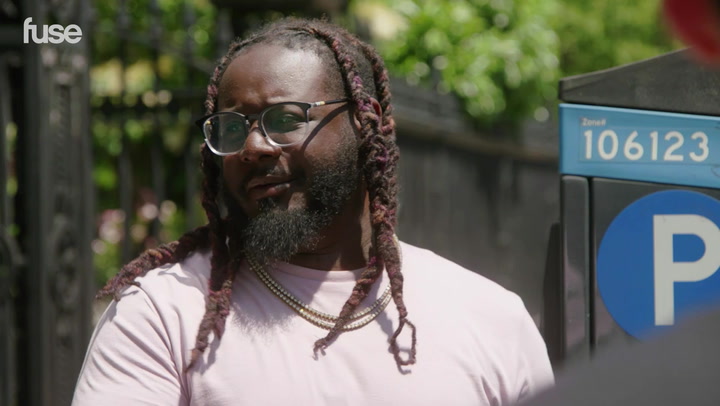The Emo Revival: Why Mall Punk Nostalgia Isn't Fading Away
FUSE TV - The Emo Revival: Why Mall Punk Nostalgia Isn't Fading Away
You've probably heard the term "emo revival" floating around for a few years now. Even if you haven't, we'll walk you through it: Bands branded with the "e" word from the '90s returned, and were often viewed as simply "indie rock," because of the stigma that still surrounds the three letter word (it might as well be a four letter one). They played reunion gigs. They toured. Some released records. These bands (think Jawbreaker, Sunny Day Real Estate, Cap'n Jazz, American Football, The Promise Ring) are largely considered the second wave of emo, following the bands that grew out of the tradition of '80s D.C. emo and invented the sound: Rites of Spring, Embrace and the like.
Those bands were born out of hardcore (Embrace share a member with Minor Threat) and sounded more punk than the sensitive whine that we know the genre to be now. Those bands are also largely obscure, so the emo revival didn't start with them. Instead, it began with those bands from the second wave--bands that experienced real underground popularity, and later were treated as legends from people who didn't live through it.
Now, it seems the same treatment is being given to the emo bands of the 2000s, the ones that were critically derided as nothing more than an adolescent obsession: Good Charlotte, My Chemical Romance, The Used and many others. Those bands are doing it differently, and in a big way.

1h 41m
Varsity Punks

Red Chef Revival

5m
Visit NYC's Nostalgia-tastic Mr. Throwback Shop

1h 20m
Home + Away

44m
Up Up & Away

23m
Daft Punk, Jessica Simpson's Edible Beauty Product Line, Midge, Quibi

23m
Richard Simmons Sweatin', HitClips, Colgate Dinners, MTV's Punk'd

21m
I Don't Trust The Cloud

57s
Noodle the Cat bites T-Pain

22m
T

21m
Don't Swear In Front of The Song

8m
Why This Show Exists?

1m
G Fella at the T-Shirt Shop: G-Thing

1h 19m
Chee and T

13m
If Abuela Ain’t Happy, Ain’t Nobody Happy

1m
T Pain's School of Business Bloopers Bothering T-Pain

1m
T-Pain's School of Business: Vite Ramen- The World's Healthiest Ramen

21m
Why Is He Blowing Me Kisses?

22m
Ice-T and Coco

1h 34m
Don't Be Nice

2m
Letter To Myself: T

1m
T-Pain's School of Business: Kiwi Campus-The Ultimate Food Delivery Robot

26m
T-Pain, Phora, Jack & Jack

T-Pain's School Of Business

20m
T-Pain and Jhene Aiko

1m
T-Pain Gets Schooled On Genetics

20m
T-Pain and Young M.A

48s
T-Pain's Encounter With A Roach

3m
First Time I Saw Myself: T

1m
T-Pain's School of Business: Artiphon- The All In One Musical Device | Season 1 Look Back |

45s
T Pain's School of Business Bloopers Birds

30s
T-Pain’s School of Business: Teaser

2m
Pusha T Breaks Down His ADIDAS Partnership

30s
T Pain's School of Business Bloopers Basketball

29s
T Pain's School of Business Bloopers Texture Guy

2m
T-Pain Plays 2 Truths and A Lie

Don't Cancel Me With Amara La Negra

29s
T Pain's School of Business Bloopers: Fomo Bikes

3m
Unboxing with T-Pain at ComplexCon - Ep 1

3m
Unboxing with T-Pain at ComplexCon - Ep. 2

3m
Unboxing with T-Pain at ComplexCon - Ep. 3

3m
Todrick Hall Reveals First Big Paycheck and Why Unfollowing Beyonce is Blasphemous

1m
T Pain School of Buisiness - Where Are They Now? Weedwine

5m
Salem Ilese Takes A Lie Detector Test: Why Is She Really "Mad At Disney"?

1m
T-Pain's School of Business: Barnana- Food Waste Into Tasty Snacks

2m
So You Can't Get Pregnant By Smiling at a Boy?

1m
T-Pain's School of Business - Where Are They Now? Morning Recovery

1h 2m
The Beatles: In the Life

12m
The Abuela and the Furious

1h 45m
The River and the Wall

12m
T-Pain Talks Developing His Unique Style While Cooking With His Mom

41m
Inside the MMA: Release the Kraken

1m
The Blue Devils Bring The Parade

43m
Triple the Pleasure, Triple the Fun

2m
T-Pain's School of Business: Neurogum- Focus Boosting Gum | Season 1 Look Back |

1h 20m
The FP

The Canvas

1h 27m
The Exchange

The 212

1h 30m
The Luau

1h 21m
The Feels

1h 33m
The Runway

20m
The Hustle

45m
The Reunion

44m
The Decision

21m
The Pilot

1h 34m
The Citizen

23m
The Motorcycle

21m
All the Focus is on the Diamonds

15m
The Abuela Test for Leaving the Nest

41m
Inside the MMA: Best of the Year

1m
The Ladies Play "Fill In The Blanks"

2m
The Hilarious Reality of the American Rat Race

20m
Out With The Old, In With The New

1m
T-Pain's School of Business: Fly Boys' Couture Club- Luxury Streetwear | Season 1 Look Back |

21m
Into The Woods

20m
Rich The Kid

1h 22m
Between the Shades

20m
The Vest Guest

41m
Inside the MMA

1h 30m
Crossed the Line

42m
The Sexuality Spectrum

20m
Making The Retrograde

1h 17m
The Revolution Generation

1h 7m
The Daphne Project

20m
Facing The Truth

21m
Enter the Metaverse

16m
The Abuela Trap

46m
Making the Cut

24m
Who's the Boss?

20m
Missy: The Icon

21m
Meet The Family

1h 23m
The Prison Within

42m
Assume the Position

41m
Facing the Music

1h 22m
The Right Girls

44m
The Winner Is…

22m
Behind The Snow

21m
Rock the Bells

1h 3m



